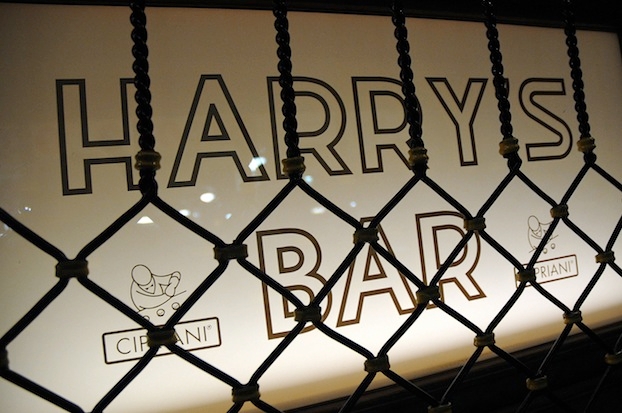Harry’s Bar is a dull pale box. This is remarkable in Venice, which is a hospice for dying palaces, held up aching over the world’s most charismatic puddle; Harry’s is a transgressive anti-palazzo. It is a world-famous restaurant, the jewel of the Cipriani brand, and it is very conscious of this honour; it sells branded tagliarelli and books about the meals it served 30 years ago to the rich and famous; it is into auto-iconography, like the city it lives in. For this, and so much else, I blame Ernest Hemingway. He ate here after shooting birds in the lagoon and doesn’t the world know it? Some men fought against Hitler. Others ate against him.
Outside, people pose for photographs by the signage. I do not know why the tourists need such comprehensive evidence of proximity to Harry’s, but they snap away. Venice has this impact; people take photographs so they can believe it exists.
I dropped The Spectator’s name for a reservation because I was once turned away with a postcard (it was a selfie) and a pitying look from the maitre d’. But that was during the film festival and Kenneth Branagh was palely loitering. I needn’t have bothered. On a Thursday night in May only three tables are taken: a group of Indians extracted, as if surgically, from a gondola and plonked down here, where they enjoy themselves with the kind of clenched teeth aggression only a very expensive meal-of-a-lifetime can induce; three boastful American businessmen (one of whom looks like an evil Ronnie Corbett) boring each other, and some elderly Spaniards with the drooping, fascinating, corrupt faces of puppets. Or Muppets.
The decor is pleasing because it is so unlike the rest of Venice, which is still obsessed with embossed fabrics and overhead lighting from those terrible Murano chandeliers, like Barbara Cartland marauding down the Bishops Avenue in hell; it is pared-down art deco, with pale brown chairs and a long brown bar, and it is painted in soft shades of gold. I like gold; it is the colour of so many charming things — cream, money, Big Bird.
The waiter trundles over. He is witty, ancient and wise; is he a descendent of a doge? It is possible. He is in white, like a physician, and he knows that good service is all infantilisation; by the end of the meal we are approximately six months old between us. Bread, he says lovingly. Butter. Cuddles.
The menu is long, fragile and as tight as Scrooge McDuck, if slightly more glamorous; its logo is a waiter polishing a glass, or maybe wringing out a towel — I’m not sure. Minestrone soup is €26; Scampi, €73; a slice of cake, a magnificently grandiose €32. All this, of course, is larceny, but larceny practised with such well-trod panache, such ennui-filled and sad-eyed smiles, such wonder and mystery, we only feel a drugged kind of gratitude — that we should be here, and eating white sugar cake for €32. In restaurants such as this, a diner really needs a punch in the face, and a shake of the shoulders — come back! It’s not real! But Venice, which is Disney World for people with taste haunted by death, is practised at such spells. When the former lords of three-eighths of the Holy Roman Empire run a restaurant, this is how.
The food is simple and well done: a hearty bean stew, spinach and bacon salad, an ‘American’ burger which comes between two slices of what may be toasted Mother’s Pride (Venetian bread is not good), the best liver I have eaten, and then cake — wild cake, crazy cake, cake worth €32, or more; cake worth everything I own.
Such avarice! Such bliss!







Comments